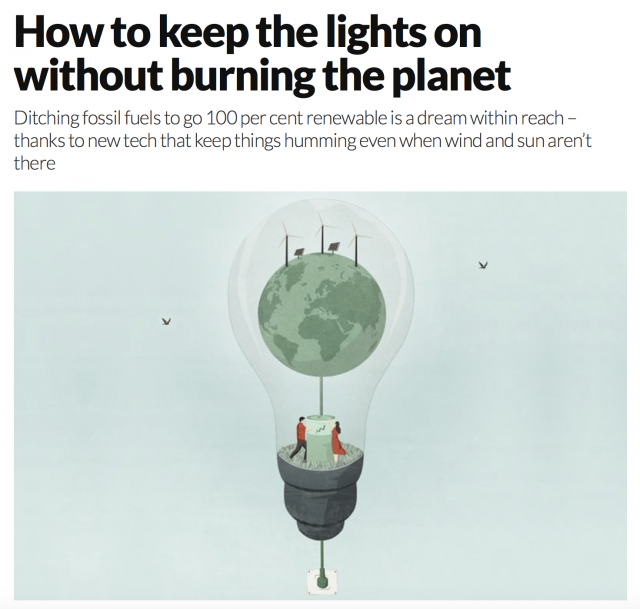NEWS How to keep the lights on without burning the planet
TO STAND any chance of halting runaway climate change, we need to squelch carbon emissions down to near zero by mid-century. That means getting off filthy fossil fuels – and fast. Few scientists would disagree with that, but there is precious little consensus on how to do it. Nuclear fission power is expensive and mired in controversy. Nuclear fusion, directly harnessing the kind of reactions that power the sun, remains a distant dream. Meanwhile, renewable energy is too unreliable to meet all our power demands.
Or is it? Clean energy technologies have come on leaps and bounds in the past decade or so. More recently, an impassioned debate has broken out among energy experts as to whether “100 per cent renewables” is now within our grasp and, if so, how we get there. “We can really mess this up,” says Dan Kammen, an energy researcher at the University of California, Berkeley. “Just because we can make the shift doesn’t mean we will.” But the path we need to take – and the hurdles we face – are increasingly clear.
The renewables revolution has gathered momentum in recent years thanks to free-falling prices. And as clean becomes cheap, installation is surging. The world added 98 gigawatts (GW) of solar energy last year – more than any other energy source. Over half of that, 53 GW, was in China, which has long been the world’s biggest consumer of dirty coal.
.…
To access the entire article online, click here.

You must be logged in to post a comment.